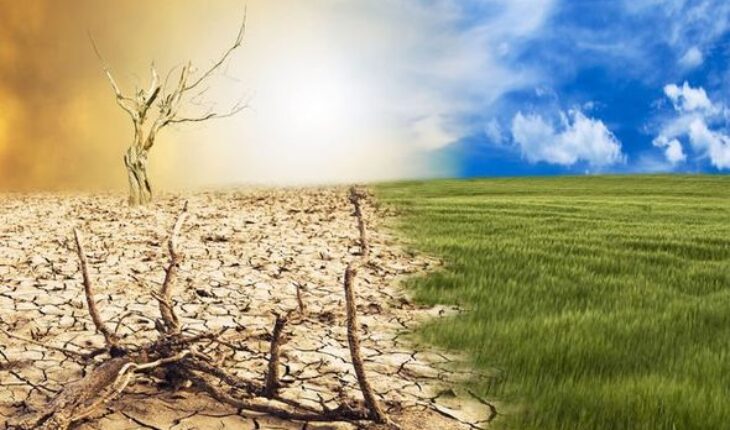Adrian Bilal, an economist at Harvard University in the US, and Diego R. Canzinga, an economist at North Western University, recently announced the implications of their study, saying that if global temperatures rise by 1 percent, global gross domestic product (GDP) would be a loss of up to 12 percent, while there could be a negative impact of 31 percent on long-term welfare schemes, which could increase to 52 percent by 2100 if the situation does not improve. Both these economists believe that if the global temperature increases by 1 degree Celsius from the current level, there can be a 12 percent decline in economic output, which cannot be compensated even in 10 years. Economists also believe that if global temperatures had not increased, per capita production could have been 37 percent higher.
There is life on earth due to the presence of a certain temperature in the atmosphere, but today due to industries, cutting of trees, various appliances like fridge, cold temperature controller etc., gases like carbon dioxide, methane, nitrous oxide, Chlorofluorocarbons etc. are emitted. Due to which the layer of greenhouse gases is becoming thick and they are absorbing more energy from the Sun and transmitting it to the Earth, due to which the temperature of the Earth is increasing and the life of humans is becoming difficult.
The main source of carbon dioxide is fuel or coal, while agriculture is emitting methane and nitrous oxide gases. The main source of Chlorofluorocarbons are refrigerators and cold heating equipment. Both these devices cause the most harm to the environment. Due to indiscriminate cutting of forests, the amount of carbon dioxide in the atmosphere is increasing, because trees and plants do the work of absorbing it. Carbon dioxide levels have increased by more than 30 percent since the Industrial Revolution in 1750, while methane levels have increased by 140 percent. The situation is so serious that the level of carbon dioxide in the atmosphere has reached the highest level in eight million years.
The upsurge in the temperature of the atmosphere is called global warming. Earth’s average temperature has increased by 0.8 degrees Celsius over the past 100 years, of which 0.6 degrees Celsius has occurred in the past 3 decades. Over the past few decades, sea levels have risen by 3 millimetres every year because glaciers are melting at a rate of 4 percent every year. According to an estimate, the Earth’s temperature will increase by 1.5 degrees Celsius by the end of the 21st century compared to 1850.
Father of the Nation Mahatma Gandhi had once said that “Nature can satisfy our needs for centuries, but not our greed”. At present the average temperature of the earth is about 15 degrees Celsius, but due to our greed it is continuously increasing, due to which ecosystem of the weather has started deteriorating. We are exploiting natural resources indiscriminately. The forest has become a forest of concrete. We have made rivers, ponds, lakes and canals our home. We have made even the air poisonous. Therefore, sometimes it is raining during the summer season and sometimes it is extremely hot during the winter season. Even in the mountains the temperature is exceeding beyond the 40-degree Celsius.
70.8 percent of the Earth is ocean and the land are on average 20 centimetres above the ocean. The warming of the atmosphere leads to the expansion of the oceans and the melting of icebergs leads to an increase in ocean water. According to the Paris Agreement on climate change, the Earth’s temperature has to be kept below 1.5 degrees Celsius. Even if this agreement is followed in letter and spirit, the sea level will rise by 50 centimetres by the year 2100, which will cause huge loss to both life and property. This would result in a wealth loss of 1.8 percent of the world’s total gross domestic product (GDP) every year. At present, 7.5 billion of the world’s population lives at a height of only 1.5 meters above the sea surface, due to which by the year 2050, 1.4 billion population will be submerged in the sea. Many cities of the world like Austria, Kiribati, many coastal areas of India and China etc. can be included in this.
Due to surge in the temperature of the atmosphere, there will be an upsurge in natural disasters like water shortage, reduction in food production, drought, flood, storm etc. in the coming days, which will make survival difficult for humans and other animals. Many plants may also cease to exist. According to an estimate, a 1 percent increase in temperature could reduce economic growth rate by 0.9 percent every year. The most negative impact of temperature rise will be on low- and middle-income economies.
Depending on the economic and development situation, various countries may have to spend an amount ranging from 5 to 20 percent of the GDP to prevent or mitigate the adverse effects of climate change. According to a World Bank report, climate change could push 45 million Indians below the poverty line and massively increase income inequality in India. Due to increase in ocean temperature, coral reefs will gradually get destroyed, which may cause a loss of 375 billion dollars every year.
We know the cure for this problem. All you need to do is start to take corrective measures. The amount of carbon dioxide gas can be reduced by promoting renewable energy and planting trees. By increasing the use of non-motorized vehicles like bicycles, rickshaws etc. instead of petrol and diesel driven vehicles, emissions of gases that harm the environment can be prevented. Long distance journeys can be completed through e-vehicles. Maximum use of bicycles and rickshaws is also possible in our country. Analysis by the Energy and Resources Research Institute, Delhi, shows that 60% of journey lengths in Indian cities are less than 5 km, and 80% of journey lengths are less than 10 km. If the average distance of 5 km is covered by bicycle and 50 percent of the average distance of 10 km is covered by bicycle, then the environment will not only benefit but also billions of rupees will be saved.
It is not too late, if we try, emissions of carbon dioxide, methane, nitrous oxide, Chlorofluorocarbons etc. can be controlled, but for this we will have to give up our greed and selfishness. If we maintain a balance between development and nature, the current pace of climate change will reduce.
Satish Singh, Ahmedabad based Senior Columnist,Views are personal




